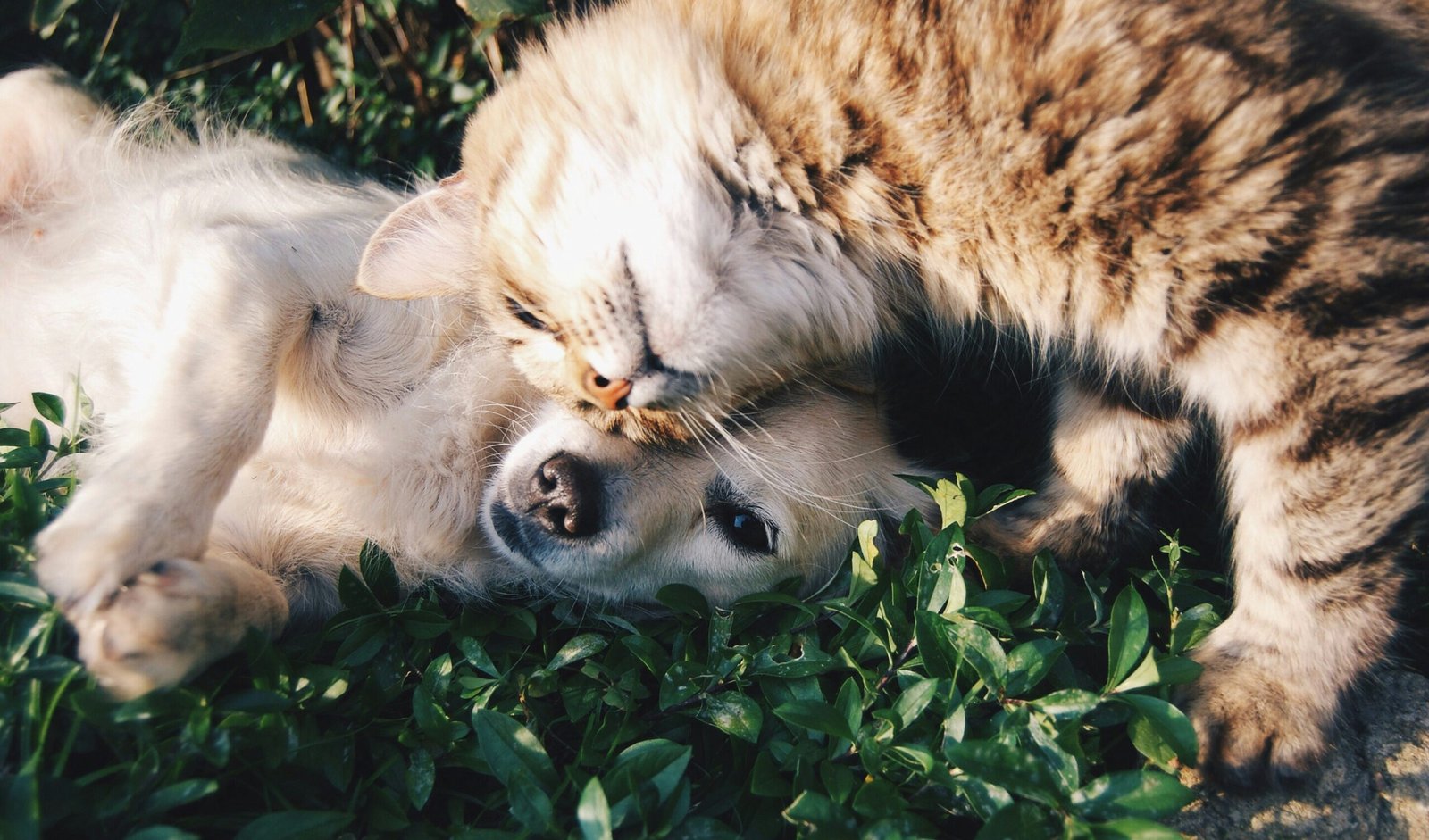Top 10 Essential Supplies Every New Pet Owner Needs

1. Food and Water Bowls
Choosing the right food and water bowls is fundamental for any new pet owner, as these items play a crucial role in your pet’s daily life. The selection process should consider various factors, including size, material, and ease of cleaning, all of which greatly influence the feeding experience for your furry friend.
When it comes to size, it is essential to select bowls that accommodate your pet’s breed and size. For instance, a small dog may require different bowl dimensions compared to a large breed. A properly-sized bowl ensures that your pet can comfortably eat and drink without any strain or mess. Additionally, choosing bowls that are shallow or deep will depend on your pet’s characteristics; for example, flat bowls may be more suitable for cats to encourage easier access.
The material of the bowls also plays a significant role in their functionality and your pet’s health. Common options include stainless steel, ceramic, and plastic. Stainless steel bowls are widely regarded as the best choice due to their durability and resistance to bacteria. They are also easy to clean, making them ideal for maintaining hygiene. Ceramic bowls can add a touch of style to your home and usually come in assorted colors and designs, but it is vital to ensure they are lead-free. On the other hand, plastic bowls, while lightweight and inexpensive, may harbor bacteria and are more prone to scratching, which can become a health hazard over time.
Moreover, selecting bowls that are dishwasher-safe can simplify the cleaning process, making it more manageable for new pet owners with busy lifestyles. With various options available, investing time in choosing the right food and water bowls is necessary to foster a healthy feeding routine and enhance your pet’s overall well-being.
Quality Pet Food
Choosing the right food for your pet is essential to ensuring their health and well-being. Every pet has unique nutritional needs based on factors such as species, breed, age, and activity level. When selecting pet food, it is crucial to understand these requirements and select a formulation that provides a balanced diet. For dogs and cats, look for foods that meet the guidelines established by the Association of American Feed Control Officials (AAFCO).
Reading ingredient labels is an important step in selecting quality pet food. The first few ingredients should include high-quality sources of protein, such as meat or fish. Beware of foods that list grains or fillers as the primary ingredients, as they do not provide the essential nutrients that pets require. Additionally, it is advisable to avoid artificial preservatives, colors, and flavors, which can be detrimental to your pet’s health.
Dietary restrictions and allergies are another consideration when selecting pet food. Some pets may have sensitivities to certain ingredients, such as wheat, soy, and corn. In such cases, it may be necessary to explore hypoallergenic options or limited-ingredient diets. Consulting with a veterinarian can help identify specific dietary needs and suitable food options tailored for your pet.
Pet food comes in various forms including dry, wet, and raw. Dry food, or kibble, is often more economical and can help in maintaining dental health due to its crunchy texture. Wet food usually contains higher moisture content, making it appealing and easier to digest, which is beneficial for pets that prefer softer textures. Conversely, raw diets aim to mimic a pet’s ancestral eating habits, but they require careful handling and storage due to potential health risks. Ultimately, the choice among these options may depend on personal preference and your pet’s specific health requirements.
Comfortable Bedding
Providing a comfortable sleeping area is paramount for any pet owner. A well-chosen bed can significantly influence a pet’s health, behavior, and overall sense of security. There is a wide range of bedding options available, each catering to different types of pets and their specific needs.
When selecting bedding for your furry companion, consider the materials used. Common options include memory foam, which offers excellent support, particularly for older pets or those with joint issues. Orthopedic beds are designed with this consideration in mind, providing relief and comfort throughout the night. Alternatively, synthetic materials can be easier to clean and maintain, making them suitable for pets prone to accidents.
Size is another critical factor. A bed that is too small can lead to discomfort and restless sleep, while a bed that is too large may not provide the sense of coziness pets often seek. It’s essential to choose a size that accommodates your pet’s dimensions, allowing them to stretch out comfortably while still feeling secure.
Different types of bedding cater to different needs. Some beds come with removable covers for easy washing, ensuring a hygienic environment. Others include raised designs that keep pets off cold or hard surfaces, ideal for those living in colder climates. For pets that enjoy burrowing, enclosed beds or caves can provide a sense of security, mimicking their instincts.
In essence, a good bed can positively impact a pet’s physical and mental well-being. Not only does it provide a place for rest, but it also contributes to a healthy lifestyle, reducing stress and anxiety. By investing in high-quality bedding tailored to your pet’s needs, you set the foundation for a happy and healthy life.
Basic Grooming Supplies
Grooming is an essential aspect of pet ownership that contributes significantly to the hygiene, health, and overall well-being of pets. For new pet owners, having the right grooming supplies on hand is crucial. Basic grooming tools include brushes, combs, and nail clippers, all of which serve different purposes based on the pet’s breed and coat type.
Brushing is often the most fundamental grooming practice. The type of brush needed will vary depending on whether the pet has short hair, long hair, or a double coat. For instance, a bristle brush works well for pets with short fur, while slicker brushes are more effective for pets with longer or thicker coats. Regular brushing can help reduce shedding, prevent matting, and promote a healthy, shiny coat.
Combing is another important grooming activity, especially for pets with longer or denser fur. Combs can help detangle knots and remove loose hair, contributing to a more manageable coat. Additionally, a good comb can help distribute natural oils across the fur, enhancing both appearance and health. Pet owners should familiarize themselves with the coat type of their pets and select the appropriate combs to avoid pulling or discomfort.
Nail care is also a vital aspect of grooming. Regular nail trimming helps prevent health issues such as painful splitting or ingrown nails. Nail clippers suitable for pets come in various styles; guillotine-style clippers and scissor-type clippers are commonly used. Owners should take care to avoid cutting into the quick, which can cause bleeding and pain. It may be helpful to consult a professional groomer or veterinarian for demonstrations on proper trimming techniques.
In conclusion, investing in basic grooming supplies is necessary for maintaining pet hygiene and comfort. Regular grooming not only benefits a pet’s appearance but also contributes to their overall health and happiness, ensuring a rewarding pet ownership experience.
Leashes and Collars
When welcoming a new pet into one’s life, safety and comfort should take precedence, especially in choosing the right leashes and collars. These essential supplies are not just fashionable accessories but serve significant functional purposes. There are numerous styles of collars available, ranging from flat collars to harnesses, each designed for specific needs. Flat collars, for instance, are common for everyday use, ideal for attaching identification tags and leashes. However, for pets that pull during walks or are in training, a harness provides better control and reduces strain on the pet’s neck.
Safety features are paramount when considering leashes and collars. Many modern collars incorporate breakaway mechanisms that allow pets to escape if they become snagged, reducing the risk of injury. Similarly, reflective stitching or materials can enhance visibility during evening walks, ensuring that both the pet and the owner remain visible to traffic. Owners should also assess the width and material of the collar, as a wider collar generally provides better comfort and distributes pressure more evenly, making it safer for the pet.
Proper fit of a collar is crucial; it should be snug enough that the pet cannot slip it off but loose enough to allow for two fingers to fit comfortably between the collar and the pet’s neck. For training purposes, styles such as martingale collars can prevent slipping out during walks, which is particularly beneficial for dogs with narrower heads. It’s significant for pet owners to consider the diverse options available, as each pet may have unique requirements based on their size, breed, and behavior. Investing in high-quality leashes and collars contributes to the overall safety and well-being of pets, enhancing the experience of pet ownership.
Pet Identification
One of the most critical responsibilities of a new pet owner is ensuring their companion is easily identifiable. Pet identification serves as a lifesaving measure, significantly increasing the chances of reuniting with your pet in the unfortunate event that they get lost. There are several avenues for identification, including traditional identification tags and more modern solutions like microchipping. Each of these methods has its advantages and considerations, which should be taken into account.
Identification tags should be securely attached to your pet’s collar, containing essential information such as your pet’s name, your name, a contact number, and, if preferred, your address. This information is vital for anyone who might find your pet, allowing them to quickly contact you. It’s advisable to check that the collar fits properly and is comfortable for your pet to wear consistently without discomfort.
In addition to tags, microchipping is a highly recommended option that provides a permanent form of identification. A microchip is a small device implanted under your pet’s skin, containing a unique identification number that is stored in a national database. When scanned by a veterinarian or animal shelter, the chip reveals your contact details, facilitating a swift reunion. Importantly, microchipping does not replace the need for visible tags but rather complements them, as tags are more recognizable and convenient for anyone who might find your pet.
Pet owners should also be aware of local laws regarding pet identification, as many municipalities require dogs and cats to wear identification tags at all times. Some regions may even mandate microchipping as part of responsible pet ownership. Consulting your local regulations can help ensure compliance, thus promoting the safety and welfare of your pet within your community.
Toys for Play and Training
When welcoming a new pet into your home, providing the right toys is vital for their emotional and physical well-being. Toys are not just playthings; they are essential tools that contribute significantly to your pet’s mental stimulation, physical exercise, and overall health. For dogs, the spectrum of toy types ranges from durable chew toys designed to promote dental health to interactive toys that stimulate the mind. Chew toys, for instance, can help satisfy a dog’s natural chewing instinct while also keeping their teeth clean. Selecting high-quality materials is crucial to ensure both safety and durability.
Interactive toys serve another important role; they engage pets in stimulating and rewarding play. Puzzle toys, for example, challenge pets to figure out how to access treats hidden within, fostering problem-solving skills and keeping them engaged for longer periods. Cats, too, benefit from a variety of interactive toys that encourage them to pounce, swipe, and chase, which are all natural behaviors. These activities not only keep your pet entertained but also help them stay active and fit.
In addition to promoting physical activity and mental challenges, toys also play a crucial role in bonding and socialization between pets and their owners. Engaging in playtime fosters an affectionate relationship and provides opportunities for training. Using toys to reward good behavior can effectively reinforce commands and promote positive learning experiences. Whether it’s playing fetch with a ball or enticing a cat with a feather wand, these activities are instrumental in creating a harmonious environment where your pet feels loved and secure. The right assortment of toys ultimately enhances a pet’s quality of life, supporting their instinctual behaviors while enabling bonding between the pet and the owner.
Health Care Essentials
Every new pet owner must prioritize their furry companion’s health with essential healthcare supplies. Preparing for minor injuries and health issues is crucial in ensuring a pet’s well-being. Among the most important items to have is a comprehensive pet first aid kit. This kit should ideally include bandages, antiseptic wipes, gauze, adhesive tape, and scissors to address minor injuries promptly. Having a thermometer, tweezers, and a pet-safe antiseptic is also advisable, as these tools aid in assessing and treating various injuries or ailments.
Moreover, flea and tick prevention products are vital health essentials. Infestations can lead to serious health complications, including skin infections and transmission of parasites. Consult with a veterinarian to determine the most suitable preventive medications for your pet’s age and breed. Options typically available include topical treatments, oral medications, and flea collars. Regular use of these products not only protects your pet but also contributes to a healthier living environment for everyone in the household.
In addition to treatment supplies, grooming tools play a significant role in maintaining pet health. Brushes, combs, nail clippers, and pet-friendly shampoos are necessary for effective grooming. Regular grooming helps prevent matting and reduces the risk of skin infections by promoting good hygiene. Additionally, dental care products such as canine toothbrushes, toothpaste, and dental chews are essential for maintaining oral hygiene, which is often overlooked by new pet owners.
Investing in these healthcare essentials allows pet owners to handle minor incidents efficiently and reduces the risk of complications. Ultimately, preparedness fosters a healthier and happier life for both pet and owner, reinforcing the bond that exists between them.
Essential Cleaning Supplies for New Pet Owners
Owning a pet undoubtedly brings joy and companionship; however, it also comes with the responsibility of maintaining a clean living environment. As a new pet owner, it is crucial to equip yourself with appropriate cleaning supplies to manage pet-related messes effectively. One of the most essential items in your cleaning arsenal is a good supply of poop bags, which are necessary for outdoor clean-up. These bags are not only essential for maintaining your yard but also for upholding your responsibility to your community by preventing the spread of bacteria and keeping public spaces clean.
In addition to poop bags, enzymatic cleaners should be considered a must-have. These specialized cleaners work to break down biological materials, making them particularly effective at neutralizing odors and stains caused by urine, feces, and vomit. Unlike regular household cleaners, enzymatic formulations target the actual source of the smell, ensuring that your living space is not only clean but also pleasant for both you and your pet.
Dust and fur may also become a regular part of your home life; hence, having a variety of cleaning tools is essential. A vacuum cleaner designed specifically for homes with pets can significantly simplify the process of keeping your floors free of hair, dander, and debris. Additionally, lint rollers or pet hair removers can quickly tackle minor messes, enabling you to maintain a tidy appearance on clothing and furniture.
For those unexpected accidents, a supply of paper towels and disposable wipes can be invaluable. Always having these disposable cleaning items on hand ensures you are prepared for immediate clean-up that prevents prolonged exposure to messes that could attract pests or lead to unpleasant odors. Investing in these cleaning supplies is an important step in maintaining a happy and hygienic home for both you and your new furry friend.
Training Supplies
Training is a crucial component of pet ownership, as it not only fosters a strong bond between pet and owner but also ensures that pets exhibit good behavior in various situations. To effectively train a pet, several essential supplies can facilitate this process, among which clickers, training pads, and reward-based treats play a significant role.
Clicker training is a method that utilizes a small handheld device that makes a distinct sound when pressed. This sound serves as a marker for desired behaviors, effectively communicating to the pet that they have performed correctly. The training approach is grounded in positive reinforcement, which develops a clear association between the action and the reward. For beginners, obtaining a clicker can significantly enhance their training sessions.
Moreover, training pads are vital for housebreaking young pets, particularly puppies. These absorbent pads are designed to be placed in specific locations, allowing the pet to relieve themselves as they learn where to go. This not only helps to avoid accidents inside the home but also aids in teaching proper outdoor behavior over time. Positioning the pads in a consistent area reinforces the training routine and minimizes confusion for the pet.
Reward-based training treats are another effective tool for instilling good behavior, encouraging pets to engage in desirable actions. These treats should be small, nutritious, and highly palatable to maintain the pet’s interest and motivation. Different training methods may vary in effectiveness depending on the pet’s personality, yet the consistency of using positive reinforcement has been shown to cultivate a well-behaved companion.
In conclusion, the selection of appropriate training supplies, such as clickers, training pads, and enticing treats, combined with effective training techniques, contributes greatly to fostering a harmonious relationship with a pet. By investing in these training essentials, new pet owners can pave the way for a responsive and well-trained animal companion.

